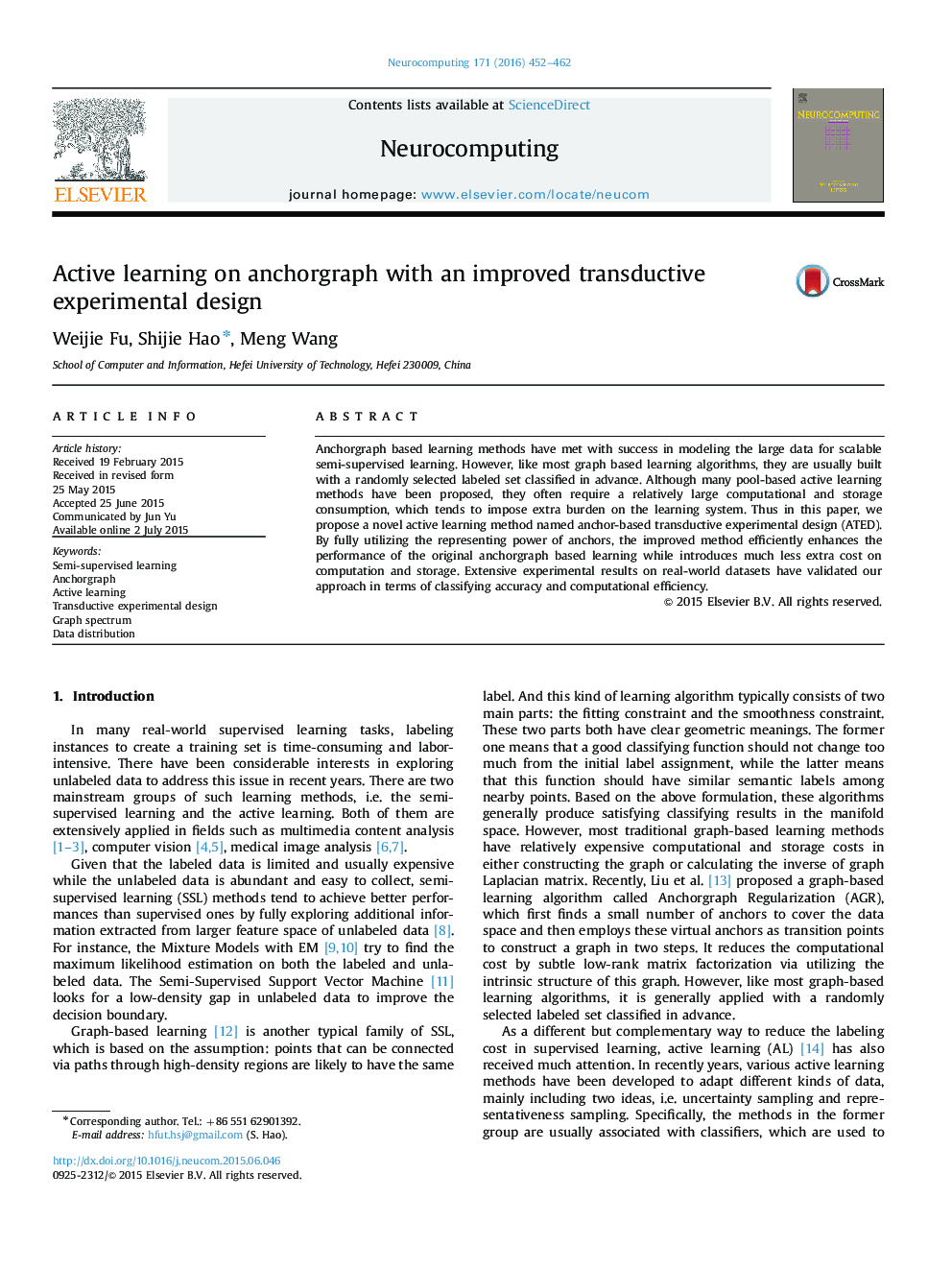| Article ID | Journal | Published Year | Pages | File Type |
|---|---|---|---|---|
| 407421 | Neurocomputing | 2016 | 11 Pages |
•We empirically show anchors preserve the backbone of the implicit data manifold.•We propose the ATED method that efficiently selects unlabeled data for human labeling.•Our method achieves much less temporal costs with good accuracies.
Anchorgraph based learning methods have met with success in modeling the large data for scalable semi-supervised learning. However, like most graph based learning algorithms, they are usually built with a randomly selected labeled set classified in advance. Although many pool-based active learning methods have been proposed, they often require a relatively large computational and storage consumption, which tends to impose extra burden on the learning system. Thus in this paper, we propose a novel active learning method named anchor-based transductive experimental design (ATED). By fully utilizing the representing power of anchors, the improved method efficiently enhances the performance of the original anchorgraph based learning while introduces much less extra cost on computation and storage. Extensive experimental results on real-world datasets have validated our approach in terms of classifying accuracy and computational efficiency.
